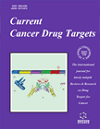
Full text loading...
We use cookies to track usage and preferences.I Understand

Nano-curcumins (Nano-CUR) improve solubility, bioavailability, and stability of the release of CUR into the body. In this systematic review, we aim to investigate different CUR nanoformulations' in targeting radiosensitizing pathways and radioprotective mechanisms.
We thoroughly searched electronic databases, including PubMed/MEDLINE, Web of Science, Scopus, Embase, and Cochrane Library to identify pertinent studies published before July 21, 2024. inclusion and exclusion criteria were set based on the study's purposes. Two reviewers independently performed data extraction to ensure precision and minimize bias. Subsequently, the data were extracted and analyzed.
A total of 24 articles were included. Nano-CURs by scavenging the levels of reactive oxygen species (ROS), decrease malondialdehyde (MDA), improve superoxide dismutase (SOD), prevent DNA methylation, reduce tumor necrosis factor-alpha (TNF-α), interleukin (IL)-6, IL-b and transforming growth factor-beta (TGF-β1), improve cell cycle, inhibit vascular endothelial growth factor (VEGF), attenuate cell cytotoxicity and modulate cell apoptosis induce its radioprotective effects. In contrast, Nano-CUR induces oxidative stress and accumulation ROS, inhibits nuclear factor-κB (NF- κB), activates the expression of TNF, TGF-β, phosphatidylinositol and FoxO, causing DNA damage, activating proapoptotic pathways (boosted P53, P21 and BAX expressions), cell cycle arrest, reducing hypoxia-inducible factor (HIF-1α), revealed radiosensitizing effects.
Nano-CURs improve CUR bioavailability and increase cancerous cells' sensitivity to radiation. They also protect healthy cells from ionizing radiation without significant side effects.

Article metrics loading...

Full text loading...
References


Data & Media loading...
Supplements